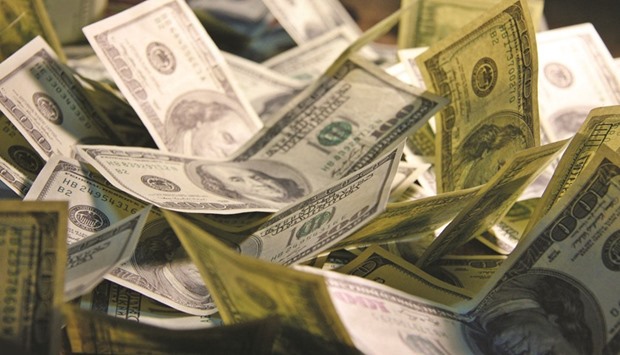The dollar’s unprecedented run against the euro over the past 18 months is set to run out of steam in 2016, according to two of Europe’s biggest money managers.
Following a 26% advance in the span, Amundi and Axa Investment Managers say the dollar’s strength will constrain the Federal Reserve’s ability to boost borrowing costs aggressively this year, after it raised rates for the first time in almost a decade. Strategists surveyed by Bloomberg forecast gains in the US currency will slow to 3.4% against the euro in 2016. The year-end median forecast of $1.05 shows little conviction that the dollar will be able to strengthen past $1.0458, the 12-year high reached in March.
Reasons for dollar caution were reflected by Fed Chair Janet Yellen on December 16 during her news conference. The strengthening greenback is one of the main reasons the pace of policy tightening will be “gradual,” as it will “hold down import prices that spills over into core inflation,” she said.
“Against the major currencies, I think the room for the dollar to appreciate more is quite limited,” said James Kwok, head of currency management at Amundi, the biggest publicly traded money manager in Europe by assets. The Paris-based firm oversees €952bn ($1.03tn).
The tepid outlook for the dollar is shared by David Page, senior economist at Paris-based Axa, which oversees $747bn.
The Federal Open Market Committee raised its target for the federal funds rate to between 0.25 and 0.5% from near zero on December 16, where it had been since 2008.
Hedge funds and other large speculators reduced net futures positions that profit from gains in the dollar versus the single currency to 159,961 contracts on December 15, from 172,331 contracts a week earlier, according to Commodity Futures Trading Commission data. The bet on a stronger dollar against the euro has been one of the most popular trades of 2015. Investors wagered better growth prospect in the US would prompt Fed tightening, while the European Central Bank would cut rates and buy bonds in a bid to revive inflation.
Historically, the euro-dollar exchange rate has a strong correlation with short-term interest-rate differentials. That trade faded late in the year after US policy makers stressed the pace of interest-rate increases would be gradual and the ECB announced stimulus measures that were less aggressive than some investors anticipated.
The next round of US dollar strength will come from gains against the nation’s largest trading partners, mostly emerging markets, said Axa’s Page.
The currencies of China, Canada and Mexico are poised to weaken versus the dollar this year, as forecast by strategists surveyed by Bloomberg. An economic slowdown in China and dwindling demand for commodities worldwide will propel the greenback higher, Axa said.
“The weakness in commodities is something that’s going to be here for quite some time,” Page said. “We’ll see all of those commodity-producing economies and therefore their currencies, continue to be under pressure.”

The dollar’s unprecedented run against the euro over the past 18 months is set to run out of steam in 2016, according to two of Europe’s biggest money managers


